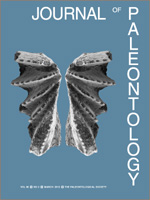A conspicuous silicified microfossil, Frankbaronia polyspora n. gen. n. sp., occurs in plant litter and as an inhabitant of microbial mats from the Lower Devonian Rhynie chert, Aberdeenshire, Scotland. Specimens are elongate-cylindrical, oval, or spherical, thin-walled, and may possess conical or column-like surface projections. Most specimens occur isolated, some are arranged in pairs or short chains. Each specimen contains several small spheres, each in turn with a (sub)centric opaque inclusion. Immature specimens indicate that ontogenesis in this fossil includes the formation of a single centric body of opaque material that subsequently is apportioned among the developing small spheres. Frankbaronia polyspora is quite similar in size and morphology to the oogonia containing oospores seen in certain extant members of the Peronosporomycetes. The Rhynie chert is known to contain the oldest fossil evidence of the Peronosporomycetes but only a single form (Hassiella monospora) has previously been documented. The discovery of a second putative representative of this group of organisms proves that this paleoecosystem is still an important source of new information on the paleodiversity of microbial life.
How to translate text using browser tools
1 March 2012
Microfossils from the Lower Devonian Rhynie Chert with Suggested Affinities to the Peronosporomycetes
Michael Krings,
Thomas N. Taylor,
Edith L. Taylor,
Hans Kerp,
Hagen Hass,
Nora Dotzler,
Carla J. Harper
ACCESS THE FULL ARTICLE

Journal of Paleontology
Vol. 86 • No. 2
March 2012
Vol. 86 • No. 2
March 2012




